Canada's Finest WW I Sniper
Corporal Francis Pegahmagabow (1891 - 1952) was a Canadian aborigine (AKA First Nation), who was the most highly decorated soldier for bravery in Canadian military history and the most effective sniper of WW I with 378 German kills and 300 captured. His weapon of choice was the often maligned Canadian Mark II 1905 Ross Rifle, a .303 carbine, fitted with telescopic sight. The rifle was considered by some too dangerous to fire, but also praised for its long range accuracy.
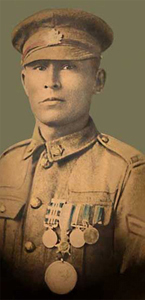
Francis Pegahmagabow was born on what is now a First Nation reserve. His father and mother were both members of the First Nation. An Anishnaabe (Ojibwa), he grew up in a warrior society at the Wasauksing First Nation (formerly the Parry Island Reserve) settlement on Parry Island. Parry Island is an Ojibwa, Odawa, and Pottawatomi First Nation Band Government, located near Ontario.
He initially enlisted in the 23rd Canadian Regiment (Northern Pioneers) of the Canadian Expeditionary Force and shipped out with the First Canadian Infantry Battalion of the First Canadian Division and saw his first action at the second Battle of Ypres on the Western Front. Her he established a reputation as a scout and a sniper. Following recovery from a leg wound suffered in the Battle of the Somme, he returned to his Battalion as it moved forward into Belgium. He received his first Military Medal award for his role carrying crucial messages along the Canadian lines over a period of a year.
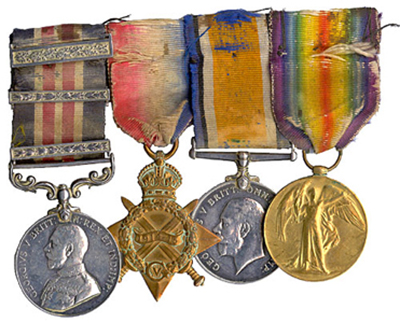
Pegahmagabow's Mounted Group (Canadian War Museum)

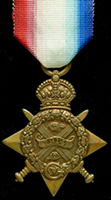


The Military Medal, The 1914 Star, the British War Medal 1914-1918, and the WW I Victory Medal
He was one of only 37 Canadians to receive two bars (three awards) to the Military Medal. It has been speculated that the reason for not receiving a more senior medal was that he was an aborigine and that his reported kills of 378 Germans was unverified, since he did not work with a spotter.
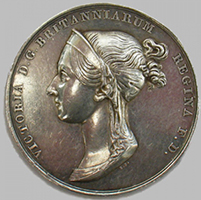
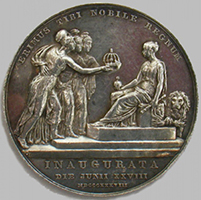
Queen Victoria Coronation Commemorative Medallion
Gold medallions were awarded to members of the Royal Family and personal guests. Silver and bronze medallions went to members of the Royal Household, government ministers, senior officials, certain foreign visitors, and naval and army officers and other ranks involved in the celebrations.
It is not known how many medals were issued.
The medallion is circular, 37mm in diameter, and was struck either in gold, silver, or bronze. The obverse of this medal bears the head of Queen Victoria and the inscription: VICTORIA D.G. BRITANNIARUM REGINA F.D. The reverse depicts three ladies symbolic of England, Scotland, and Ireland presenting a crown to the seated Victoria while a lion lies behind looking on.
Above is the inscription: ERIMUS TIBI NOBILE REGNUM, (meaning "we shall be a noble Kingdom to you") and below the inscription: INAUGURATA DIE JUNII XXVIII MDCCCXXXVIII (the Latin date of the coronation). The medallion was issued un-named.
Upon his return to civilian life, he served as Chief of the Parry Island Band now known as the Wasauksing First Nation from 1921-1925 and from 1942-1945, and Councilor from 1933-1936.
Website Maintained by Vaudezilla